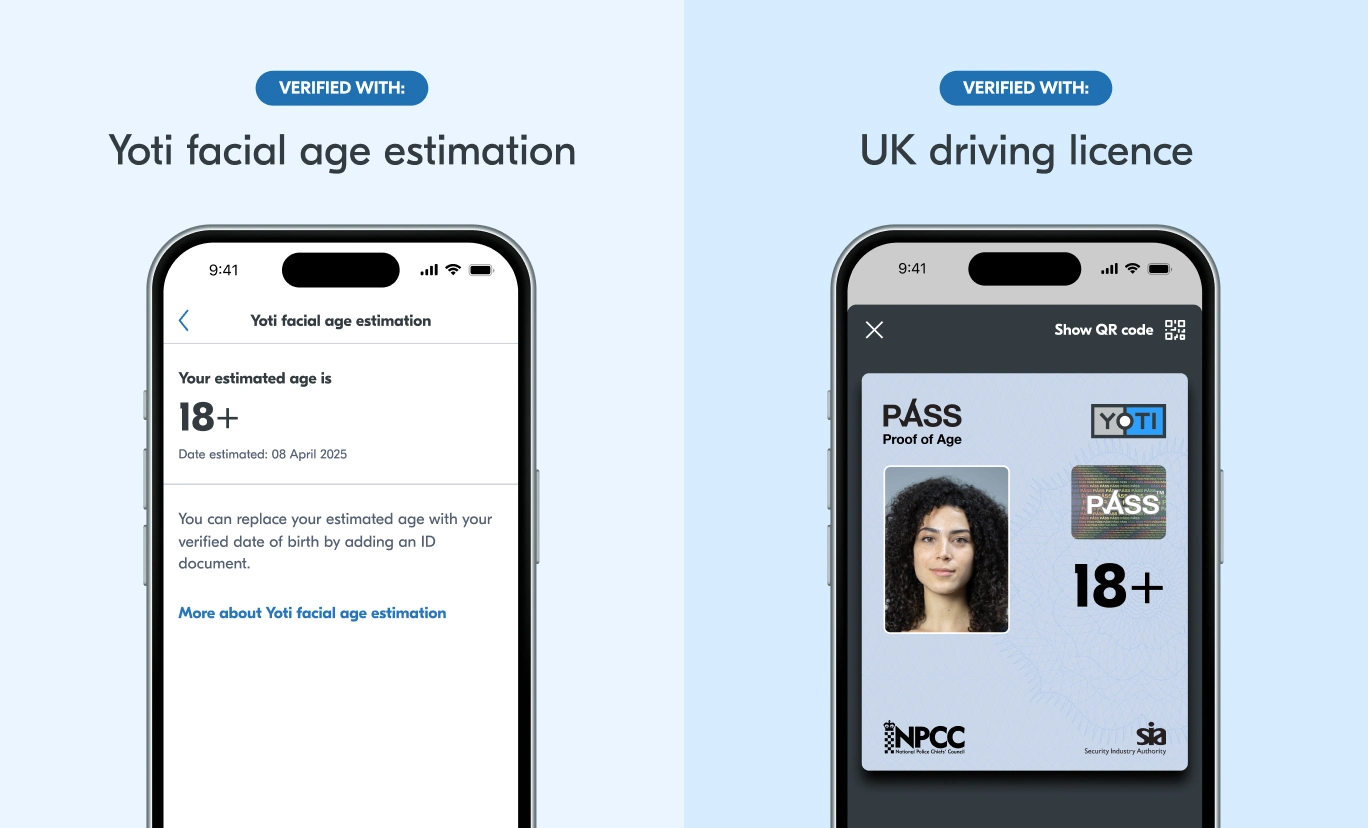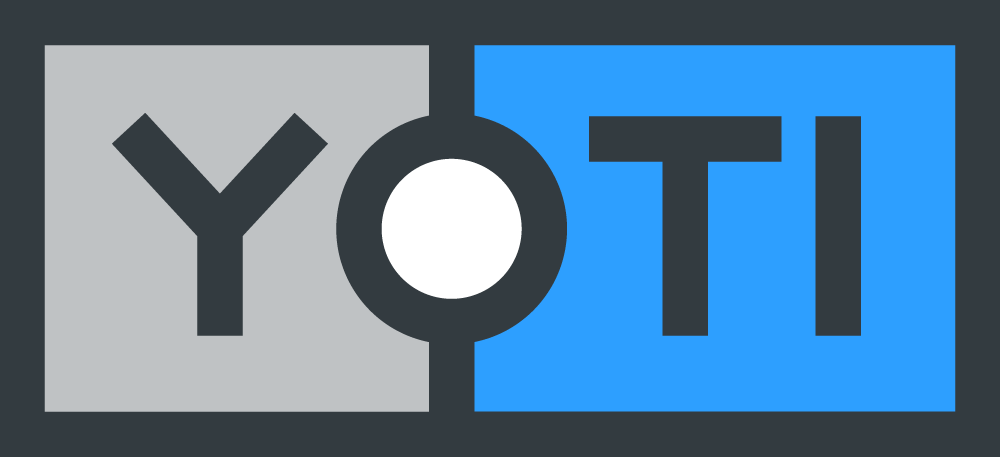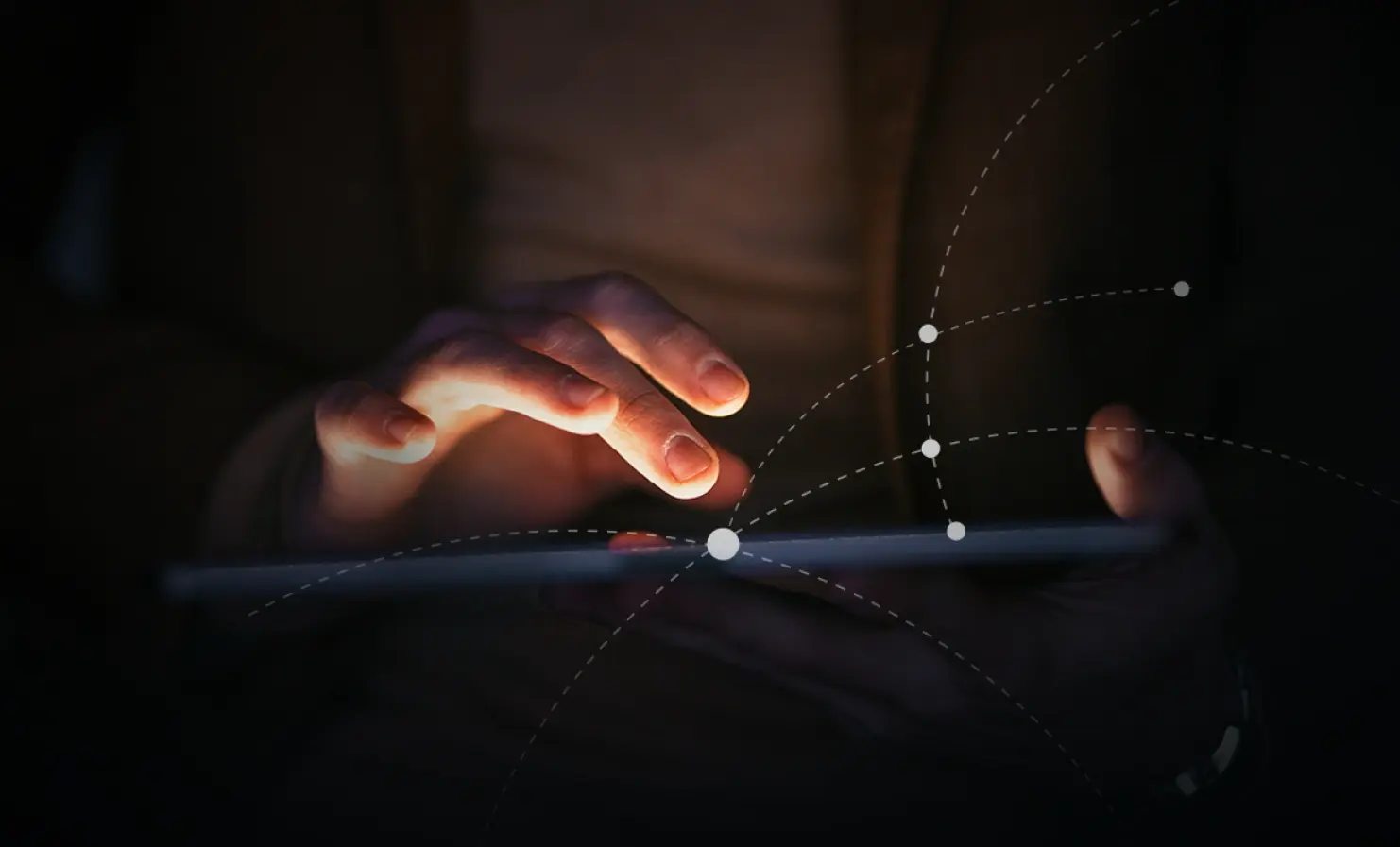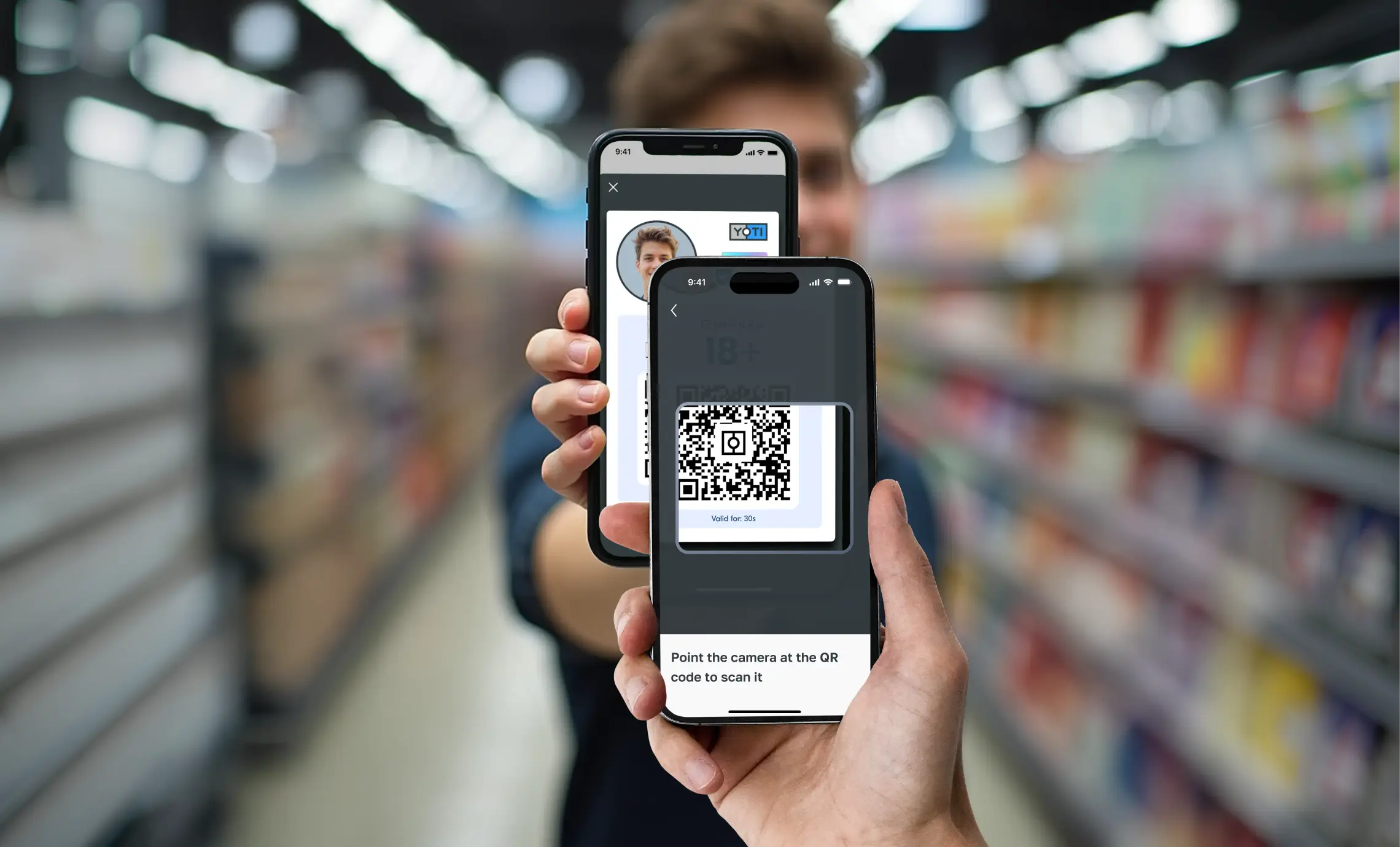
Digital ID users can have their age estimated in the app, and then anonymously share the age result. This gives them a secure, private and easy way to pass age checks.
–
With lots of legislation being introduced to improve online safety, including the UK Online Safety Act and the EU Digital Services Act, more businesses are looking at how to verify the age of users.
People should have a choice in how they prove their age, so they can choose the method that works best for them. They might use their identity document, complete a facial age estimation check, use a Digital ID app or upload their credit card details.
Regardless of which method they choose, any age assurance method needs to be data minimising, privacy-preserving, secure and anonymous. So even if someone uses an identity document or Digital ID app, this should be done in such a way where they only share their age or age range.
Yoti’s privacy-preserving approach to age assurance
One of our core principles is to make Yoti available to anyone. We want to help as many people as possible prove their age in a way that protects their privacy.
One way we are doing this is by offering free age estimations in our Digital ID app. This means that app users can have their age estimated and then anonymously share the age result, such as ‘over 18’. This gives them a secure, private and easy way to pass an age check online, without using identity or credit card documents, or sharing details like their name or date of birth.
Facial age estimation is our most popular age-checking method, estimating age from a live facial image without identifying anyone. It’s inclusive, privacy-preserving and effective. When given the choice, the majority of people choose this method to pass an age check.
We developed this technology to help people who don’t own identity documents. It’s also an option for people who do own identity documents but who don’t have these to hand or don’t wish to use them. By offering free age estimations in our Digital ID app, more people have the opportunity to prove their age online in a private and anonymous way.
The age estimation (and liveness check) is completed on the Digital ID app. Because of this, no data ever leaves their device when using their Digital ID to anonymously prove they are under or over 18.
Backed by scientific research
Last year, the National Institute of Standards and Technology (NIST) evaluated our facial age estimation technology. This was the first time it has been scientifically and independently tested. Until recently, there’s been no global benchmark for facial age estimation algorithms. The NIST global benchmarking programme gives regulators and businesses confidence in the efficacy of facial age estimation.
Our facial age estimation is an effective and inclusive way to check age and age ranges, such as over 18, with an appropriate threshold. This threshold can be set by regulators or businesses to reflect different use cases, risk and levels of assurance.
This means people who get their age estimated in our Digital ID app will have an accurate, trusted and credible way to prove their age. This is particularly important for people who don’t own an identity document or credit card – such as young people.
In the NIST evaluation, Yoti has the most accurate facial age estimation algorithm for those aged 13-16, a key age group for online age regulations and child safety. With more regulators looking at age legislation for social media, giving young people a way to prove their age without needing an identity document is particularly important.
A user can also choose to add their identity document to their Digital ID app. We verify the document is authentic and belongs to the user. Once verified, the user can share only their verified age or age range (such as over 13 or over 18). No other personal information would be required, minimising the data someone shares.
This helps people to prove their age without sharing details like their name, address or nationality. Once they have created their Digital ID, they have a free, privacy-preserving way to prove their age time and time again. This is all completed on their phone device, giving them an easy and convenient way to pass age checks.
Age assurance is not the same as identity verification
Although our age is part of who we are, it’s possible to only share our age, without sharing who we are. So we don’t need to share our name, address or even our date of birth.
In simple terms, our facial age estimation and Digital ID app allow people to prove ‘yes, I am over 18’ and that’s all. There’s no need for businesses to collect and store any personal information. We help people to anonymously prove their age, without sharing their identity.
Does your business need privacy-preserving, anonymous age checks? Get in touch to find out how we can help.



